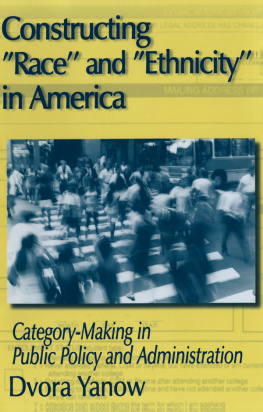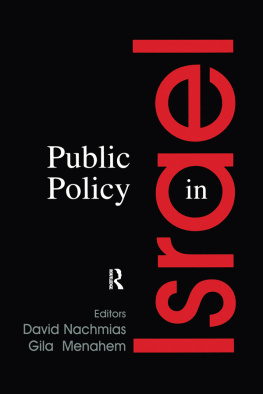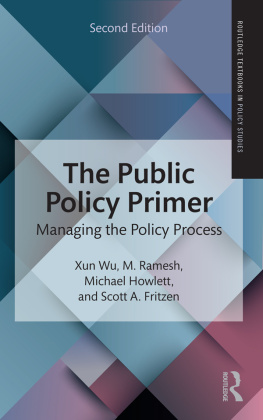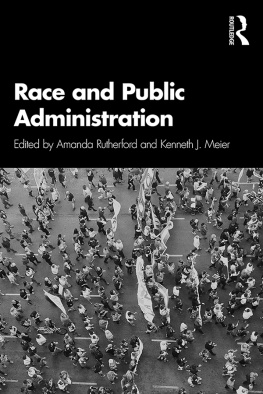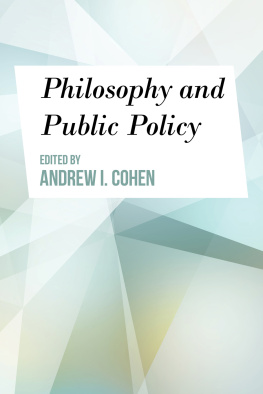Copyright 2016 by The University of Akron Press
All rights reserved First Edition 2016 Manufactured in the United States of America
All inquiries and permission requests should be addressed to the Publisher, The University of Akron Press, Akron, Ohio 44325-1703.
20 19 18 17 16 5 4 3 2 1
ISBN: 978-1-937378-48-6 (paper)
ISBN: 978-1-937378-49-3 (ePDF)
ISBN: 978-1-937378-50-9 (ePub)
A catalog record for this title is available from the Library of Congress.
The paper used in this publication meets the minimum requirements of American National Standard for Information SciencesPermanence of Paper for Printed Library Materials, ANSI z39.481984.
Cover design by Lauren McAndrews.
Public Space, Public Policy, and Public Understanding of Race and Ethnicity in America was designed and typeset by Amy Freels, with assistance from Tyler Krusinski. The typeface is Minion with Helvetica Neue display. It is printed on sixty-pound natural, and bound by Bookmasters of Ashland, Ohio.
Teresa A. Booker, The Political Context for Understanding the Existence of the TRIO Program Upward Bound originally appeared in the 2012 issue of The National Journal of Urban Education and Practice: Special Issue on Race and Urban Space (Volume 6, Number 1). Reprinted by permission of the publisher.
Kenneth S. Jolly, Officially Murdered!: Police Brutality, Internal Colonialism, and Black Liberation in 1930s Detroit originally appeared in By Our Own Strength: William Sherrill, the UNIA, and the Fight for African American Self-Determination in Detroit. New York: Peter Lang, 2013. Reprinted by permission of the publisher.
Babacar MBaye, The Myth of Postracialism: Hegemonic and Counterhegemonic Stories about Racism in America originally appeared in the 2011 issue of Critical Race and Whiteness Studies: Special Issue on Postracial States (Volume 7, Issue 1). Reprinted by permission of the publisher.
ACKNOWLEDGMENTS
This book could not have materialized without the support and guidance of family, friends, and colleagues. Special thanks to Thomas Bacher, who provided a home for this work at the University of Akron Press, and for his instrumental comments and feedback on the introduction. Thank you to all of the authors in this collection for their constant commitment, enthusiasm, and reassurance as this project spanned across years. Thank you to Carol Slatter, Amy Freels, and staff for their patience and invaluable attention to detail.
In late 2014, Attorney General Eric Holder announced that the Justice Departments civil rights investigation of Clevelands police department found that it engaged in a pattern or practice of unreasonable and unnecessary use of force. The report was released just weeks after black twelve-year-old Tamir Ricebrandishing what turned out to be a pellet gunwas shot down by a white police officer. The external review of the Cleveland police force was requested by the city after a 2012 incident during which police fired 137 shots into a car occupied by two unarmed black civilians following a high-speed chase. Other recent incidents of discrimination against blacks have heightened national awareness of how race impacts law enforcement decisions.
This book explores race in an urban context, and the public policies and public understanding that result from the interactions of communities that are part of densely populated areas. While some parts of urban landscapes are becoming chic again, much of the most desolate urban communities are a result of the suburbanization of large groups of whites and blacks over decades. Preconceived notions of inner city living, accurate or not, have impacted the rhetoric on race in America.
Discussions of race in the United States are complicated, to say the least. The legacy of racial interactions is as old as the founding of the country. Christopher Columbus, a white European, called the darker-skinned inhabitants Indians. That identification and subsequent characteristics associated with the group, as the republic grew, would lead to forced marches and land seizures in the name of progress. Slavery, the subjugation of a race, led to the socially acceptable representation of the other, and the labeling of a whole group as inferior, dim-witted, immoral, soulless, or sub-human. Over time, the other has included Latinos, Asians, Pacific Islanders, and white trash. In the words of Cornel West, race matters in everything we consider American.
While prejudice is a preconceived opinion that is not based on reason or actual experience, discrimination is the unjust or prejudicial treatment of different categories of people. Racism, on the other hand, is a system (consisting of structures, policies, practices, and norms) that structures opportunity and assigns value based on phenotype, or the way people look (Jones 2002, 9). According to Aguilar-Pariente (2009), racial markers like skin color, build, height, and facial features are useful when differentiating between racial groups. The white officers who responded to a call about a person wielding a gun in a Cleveland park might have formed opinions about Tamir Rice because he was black and was large for his age. Michael Brown might have assessed a store clerks phenotype and decided that stealing cigars from his store posed no risk. On the other hand, when Brown was later shot, Officer Wilson felt threatened by Browns hulk-like presence.
Once short- and long-term perceptions concerning race surface, social, political, and governmental players and groups respond in predictable ways. White officers are accused of overreacting. Blacks are not completely surprised by the use of deadly police force. Protests follow to highlight institutional racism at the local level and tap into a national anger regarding similar prejudices against specific groups concerning other ills, like lack of jobs and inadequate housing (Grey 2011; Wilson 2005). This escalation, according to Mauer, can be partially explained by the fact that there has been a pervasive belief in America since the slave era that blacks are more likely to commit crimes. As late as the 1980s, popular culture and the media tended to reinforce the notion of the black petty thief before amplifying the stereotype to include ominous, criminal predator (McEntire 2007). Also, since minorities only make up 25 percent of police forces across the United States, the line between legitimate stops, searches, and arrests can easily be blurred by the lens of white privilege, the protection that race provides amidst the disadvantages Blacks and other historically oppressed groups routinely experience (Banaszynski 2000, i; Grey 2011). In short, if whites carry an invisible, weightless backpack of [unearned] special provisions based on skin color (McIntosh 1998), then the other races are burdened with a visible and weighty steamer trunk of baggage (Hughes 1994).
Racial profiling exacerbates tensions between citizens and law enforcement officials, muddling the social landscape. Arizonas Senate Bill 1070 required a reasonable attempt to be made to determine the immigration status of a person during any legitimate contact made by an official or agency of the state or a county, city, town or political subdivision if reasonable suspicion exists that the person is an alien who is unlawfully present in the U.S. Proponents of the law called the passage historic. Opponents said the law was aimed at a specific population and was discriminatory. Discrimination is illegal, but the perception race plays in enforcing laws is deep-rooted. Still, many individuals argue that racial discrimination hasnt been a problem since the 1950s (Grey 2011). In fact, in 2013, the Supreme Court ruled that some provisions in the Voting Rights Act that dealt with racial discrimination in certain states could be rescinded because, according to Chief Justice John G. Roberts Jr., our country has changed. Those who believe racism is overused contend that minorities current economic situations have to do more with group inferiorities. The same racists, however, disregard the role that good ol boy networks play in the perpetuation of the status quo (Croll 2008). While bemoaning affirmative action results, the same individuals have no problem allowing legacies to be afforded preferential treatment in the college admissions process.




